-
 Bitcoin
Bitcoin $104,092.7082
-3.90% -
 Ethereum
Ethereum $2,500.1510
-9.45% -
 Tether USDt
Tether USDt $1.0003
0.02% -
 XRP
XRP $2.1161
-5.92% -
 BNB
BNB $644.7652
-3.34% -
 Solana
Solana $143.3632
-10.62% -
 USDC
USDC $0.9995
-0.03% -
 Dogecoin
Dogecoin $0.1728
-9.80% -
 TRON
TRON $0.2700
-2.70% -
 Cardano
Cardano $0.6282
-9.47% -
 Hyperliquid
Hyperliquid $38.5896
-7.04% -
 Sui
Sui $2.9976
-10.50% -
 Chainlink
Chainlink $13.0865
-10.97% -
 UNUS SED LEO
UNUS SED LEO $8.8697
1.35% -
 Stellar
Stellar $0.2563
-7.44% -
 Bitcoin Cash
Bitcoin Cash $401.8213
-6.21% -
 Avalanche
Avalanche $18.8844
-11.63% -
 Toncoin
Toncoin $2.9457
-8.46% -
 Shiba Inu
Shiba Inu $0.0...01163
-9.64% -
 Hedera
Hedera $0.1538
-10.65% -
 Litecoin
Litecoin $82.4785
-9.46% -
 Polkadot
Polkadot $3.7430
-9.96% -
 Ethena USDe
Ethena USDe $1.0004
-0.01% -
 Monero
Monero $306.8529
-6.55% -
 Dai
Dai $0.9998
0.01% -
 Bitget Token
Bitget Token $4.4842
-5.28% -
 Pepe
Pepe $0.0...01069
-13.19% -
 Uniswap
Uniswap $7.0207
-13.47% -
 Pi
Pi $0.5498
-13.03% -
 Aave
Aave $268.2967
-9.88%
The long upper shadow line falls back under pressure: Is the next day's reversal a signal of a wash?
A long upper shadow followed by a fallback in crypto often leads to speculation about a next-day reversal, which traders must analyze to avoid potential washes.
Jun 08, 2025 at 11:00 pm
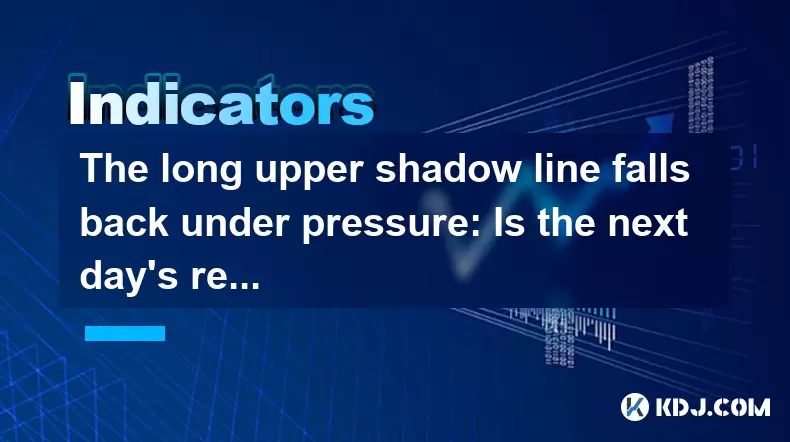
The phenomenon of a long upper shadow line followed by a fallback under pressure is a common occurrence in the volatile world of cryptocurrencies. This pattern can often lead traders to speculate about the possibility of a reversal the next day and whether it signals a wash. Understanding this pattern, its implications, and how to interpret it can be crucial for making informed trading decisions.
Understanding the Long Upper Shadow Line
A long upper shadow line on a candlestick chart indicates that the price of a cryptocurrency rose significantly during the trading period but then fell back before the close. This suggests that buyers initially pushed the price up, but sellers eventually took control, driving the price down. The length of the upper shadow can indicate the strength of the sellers' reaction.
The Fallback Under Pressure
When the price falls back under pressure after forming a long upper shadow, it often means that the initial bullish momentum was not sustained. This can be due to various factors, such as profit-taking by early buyers, negative news, or increased selling pressure. The fallback under pressure is a critical point where traders need to assess whether the trend is likely to continue or if a reversal is imminent.
Next Day's Reversal: A Signal of a Wash?
A reversal the next day after a long upper shadow and fallback under pressure can be a significant event for traders. The question arises: is this reversal a signal of a wash? A wash, in trading terms, refers to a situation where the price moves in a way that appears to be manipulated to deceive traders. To determine if the next day's reversal is a wash, several factors need to be considered.
Analyzing the Reversal
When analyzing the next day's reversal, traders should look at several key indicators:
- Volume: High trading volume during the reversal can indicate strong market interest and potentially genuine price movement. Low volume might suggest a lack of conviction and could be indicative of a wash.
- Price Action: The nature of the price action following the reversal is crucial. If the price continues to move in the direction of the reversal with sustained momentum, it is less likely to be a wash.
- Market Sentiment: Understanding the overall market sentiment can provide context. If the sentiment aligns with the reversal, it is less likely to be a wash.
Technical Indicators and Patterns
To further assess the validity of the next day's reversal, traders can use various technical indicators and patterns:
- Moving Averages: If the price moves above or below key moving averages during the reversal, it can provide additional confirmation of the trend.
- Relative Strength Index (RSI): An RSI reading that moves out of overbought or oversold territory can support the reversal's legitimacy.
- Candlestick Patterns: Other candlestick patterns, such as doji or hammer patterns, can provide additional insights into the potential for a reversal.
Case Studies and Historical Data
Examining case studies and historical data can offer valuable insights into how similar patterns have played out in the past. By looking at instances where a long upper shadow line was followed by a fallback and then a reversal, traders can identify common outcomes and refine their strategies.
For example, in a specific instance where Bitcoin experienced a long upper shadow followed by a fallback and then a reversal the next day, the analysis might reveal that the reversal was supported by high volume and positive market sentiment, suggesting it was not a wash. Conversely, another case might show low volume and erratic price action, indicating a potential wash.
Risk Management and Trading Strategies
Given the potential for the next day's reversal to be a wash, risk management becomes paramount. Traders should consider the following strategies:
- Stop-Loss Orders: Setting stop-loss orders can help limit potential losses if the reversal turns out to be a wash.
- Position Sizing: Adjusting position sizes based on the perceived risk can help manage exposure.
- Diversification: Spreading investments across different assets can reduce the impact of a single wash on the overall portfolio.
Psychological Factors
The psychological aspect of trading cannot be overlooked. The fear of missing out (FOMO) can drive traders to make impulsive decisions based on a perceived reversal. Conversely, the fear of a wash can lead to hesitation and missed opportunities. Understanding and managing these psychological factors is essential for making rational trading decisions.
Tools and Platforms
Utilizing the right tools and platforms can enhance a trader's ability to analyze and react to patterns like the long upper shadow and fallback. Platforms that offer real-time data, advanced charting capabilities, and customizable alerts can be invaluable.
- TradingView: Known for its powerful charting tools and community-driven indicators, TradingView can help traders visualize and analyze patterns.
- Coinigy: This platform offers a comprehensive suite of tools for cryptocurrency trading, including real-time data and advanced order types.
- CryptoWatch: With its focus on cryptocurrency markets, CryptoWatch provides detailed charts and market data that can aid in pattern recognition.
FAQs
Q: How can traders differentiate between a genuine reversal and a wash?
A: Traders can differentiate between a genuine reversal and a wash by analyzing key factors such as trading volume, price action, and market sentiment. High volume and sustained price movement in the direction of the reversal are generally indicative of a genuine trend change, while low volume and erratic price action may suggest a wash.
Q: Are there specific cryptocurrencies that are more prone to washes after a long upper shadow and fallback?
A: While no specific cryptocurrencies are inherently more prone to washes, highly volatile and low-cap cryptocurrencies may be more susceptible to manipulation and washes due to their smaller market sizes and liquidity.
Q: How can historical data be used to predict the likelihood of a wash after a long upper shadow and fallback?
A: Historical data can be analyzed to identify patterns and outcomes following similar events. By examining past instances of long upper shadows, fallbacks, and subsequent reversals, traders can gain insights into the likelihood of a wash occurring under similar conditions.
Q: What role does market sentiment play in determining whether a reversal is a wash?
A: Market sentiment plays a crucial role in determining the validity of a reversal. If the overall sentiment aligns with the direction of the reversal, it is less likely to be a wash. Conversely, if the sentiment contradicts the reversal, it could indicate a potential wash.
Disclaimer:info@kdj.com
The information provided is not trading advice. kdj.com does not assume any responsibility for any investments made based on the information provided in this article. Cryptocurrencies are highly volatile and it is highly recommended that you invest with caution after thorough research!
If you believe that the content used on this website infringes your copyright, please contact us immediately (info@kdj.com) and we will delete it promptly.
- Hyperliquid Continues to Outperform the Market, Rallying Again After Unit Spot Token Infrastructure Founder Reveals Two New Tickers
- 2025-06-13 12:00:28
- Is the Arbitrum (ARB) Price Set to Explode? This Chart Reveals the Comeback No One Saw Coming
- 2025-06-13 12:00:28
- PayPal Taps a Payments-Focused Blockchain to Expand Its PYUSD Stablecoin
- 2025-06-13 11:55:11
- Gold Nears a Critical Technical Threshold as Macroeconomic Uncertainties and Geopolitical Tensions Drive Investors to Safer Assets
- 2025-06-13 11:55:11
- Tether Expands Its "Dual Pillar" Investment Strategy with a Minority Stake in Elemental Altus Royalties
- 2025-06-13 11:50:12
- Circle Announces USDC Is Live on the XRP Ledger (XRPL) Mainnet
- 2025-06-13 11:50:12
Related knowledge

How to read the CR indicator's four lines that diverge and then converge? Key pressure point identification skills
Jun 13,2025 at 12:21pm
Understanding the CR Indicator in Cryptocurrency TradingThe CR indicator, also known as the Chikin Ratio or Chaikin Oscillator, is a technical analysis tool widely used in cryptocurrency trading to gauge momentum and potential price reversals. It combines volume and price data to provide traders with insights into market strength and weakness. The indic...

What should I do if the ASI vibration rise and fall indicator is not synchronized with the price? When should I believe in the indicator?
Jun 13,2025 at 12:29pm
Understanding the ASI Vibration Rise and Fall IndicatorThe Accumulation Swing Index (ASI) is a technical indicator developed by Welles Wilder to help traders identify potential reversals and confirm trends in price movements. The vibration rise and fall aspect of the ASI refers to how the line oscillates above and below its zero line, indicating shifts ...
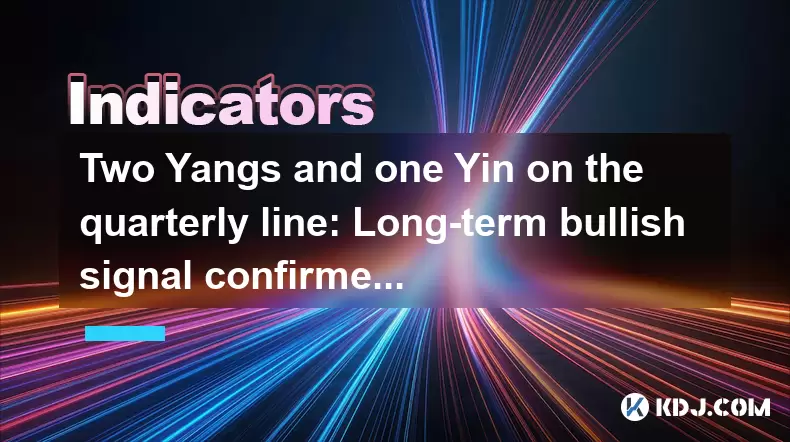
Two Yangs and one Yin on the quarterly line: Long-term bullish signal confirmed?
Jun 12,2025 at 07:00am
Understanding the 'Two Yangs and One Yin' Candlestick PatternIn technical analysis, candlestick patterns play a pivotal role in identifying potential market reversals or continuations. The 'Two Yangs and One Yin' pattern is one such formation that traders often observe on longer timeframes like the quarterly chart. This pattern consists of two bullish (...
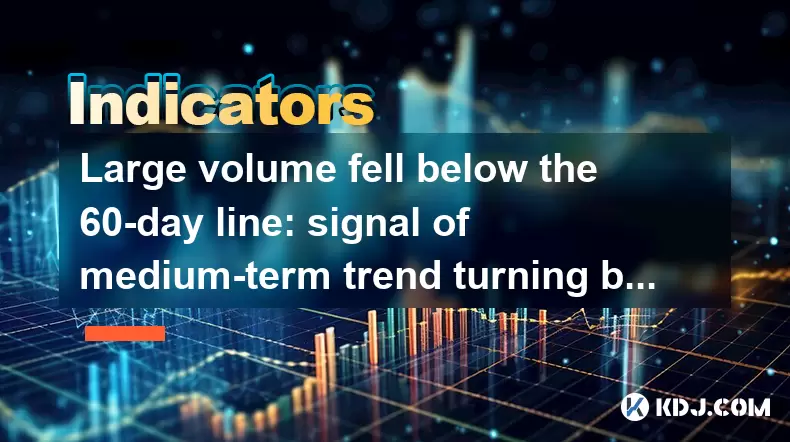
Large volume fell below the 60-day line: signal of medium-term trend turning bearish?
Jun 13,2025 at 03:42am
Understanding the 60-Day Moving Average in CryptocurrencyIn cryptocurrency trading, technical analysis plays a crucial role in predicting price movements. One of the most commonly used indicators is the 60-day moving average (MA), which smooths out price data over the last 60 days to provide traders with insights into the medium-term trend. When large v...
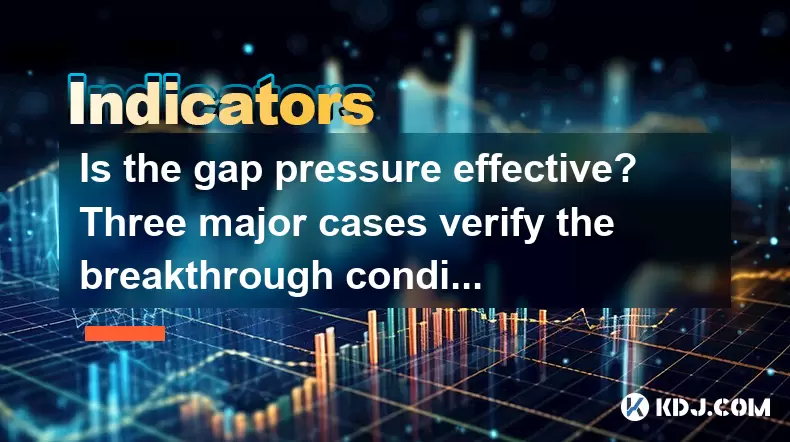
Is the gap pressure effective? Three major cases verify the breakthrough conditions
Jun 13,2025 at 04:35am
Understanding the Gap Pressure in Cryptocurrency TradingIn cryptocurrency trading, gap pressure refers to a technical analysis concept where price gaps form due to sudden market movements. These gaps often occur between the closing price of one trading session and the opening price of the next. Traders pay close attention to these gaps because they can ...
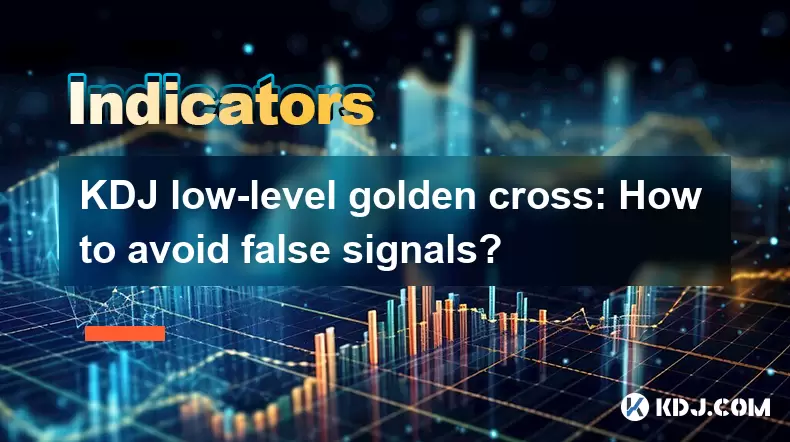
KDJ low-level golden cross: How to avoid false signals?
Jun 12,2025 at 08:21am
Understanding the KDJ IndicatorThe KDJ indicator, also known as the stochastic oscillator, is a momentum-based technical analysis tool widely used in cryptocurrency trading. It consists of three lines: the %K line (fast stochastic), the %D line (slow stochastic), and the %J line (divergence value). These lines oscillate between 0 and 100, helping trader...

How to read the CR indicator's four lines that diverge and then converge? Key pressure point identification skills
Jun 13,2025 at 12:21pm
Understanding the CR Indicator in Cryptocurrency TradingThe CR indicator, also known as the Chikin Ratio or Chaikin Oscillator, is a technical analysis tool widely used in cryptocurrency trading to gauge momentum and potential price reversals. It combines volume and price data to provide traders with insights into market strength and weakness. The indic...

What should I do if the ASI vibration rise and fall indicator is not synchronized with the price? When should I believe in the indicator?
Jun 13,2025 at 12:29pm
Understanding the ASI Vibration Rise and Fall IndicatorThe Accumulation Swing Index (ASI) is a technical indicator developed by Welles Wilder to help traders identify potential reversals and confirm trends in price movements. The vibration rise and fall aspect of the ASI refers to how the line oscillates above and below its zero line, indicating shifts ...

Two Yangs and one Yin on the quarterly line: Long-term bullish signal confirmed?
Jun 12,2025 at 07:00am
Understanding the 'Two Yangs and One Yin' Candlestick PatternIn technical analysis, candlestick patterns play a pivotal role in identifying potential market reversals or continuations. The 'Two Yangs and One Yin' pattern is one such formation that traders often observe on longer timeframes like the quarterly chart. This pattern consists of two bullish (...

Large volume fell below the 60-day line: signal of medium-term trend turning bearish?
Jun 13,2025 at 03:42am
Understanding the 60-Day Moving Average in CryptocurrencyIn cryptocurrency trading, technical analysis plays a crucial role in predicting price movements. One of the most commonly used indicators is the 60-day moving average (MA), which smooths out price data over the last 60 days to provide traders with insights into the medium-term trend. When large v...

Is the gap pressure effective? Three major cases verify the breakthrough conditions
Jun 13,2025 at 04:35am
Understanding the Gap Pressure in Cryptocurrency TradingIn cryptocurrency trading, gap pressure refers to a technical analysis concept where price gaps form due to sudden market movements. These gaps often occur between the closing price of one trading session and the opening price of the next. Traders pay close attention to these gaps because they can ...

KDJ low-level golden cross: How to avoid false signals?
Jun 12,2025 at 08:21am
Understanding the KDJ IndicatorThe KDJ indicator, also known as the stochastic oscillator, is a momentum-based technical analysis tool widely used in cryptocurrency trading. It consists of three lines: the %K line (fast stochastic), the %D line (slow stochastic), and the %J line (divergence value). These lines oscillate between 0 and 100, helping trader...
See all articles

























































































